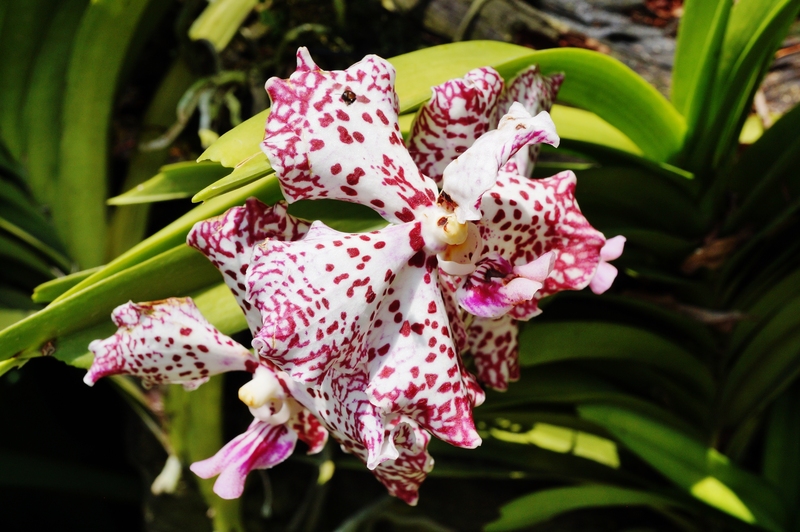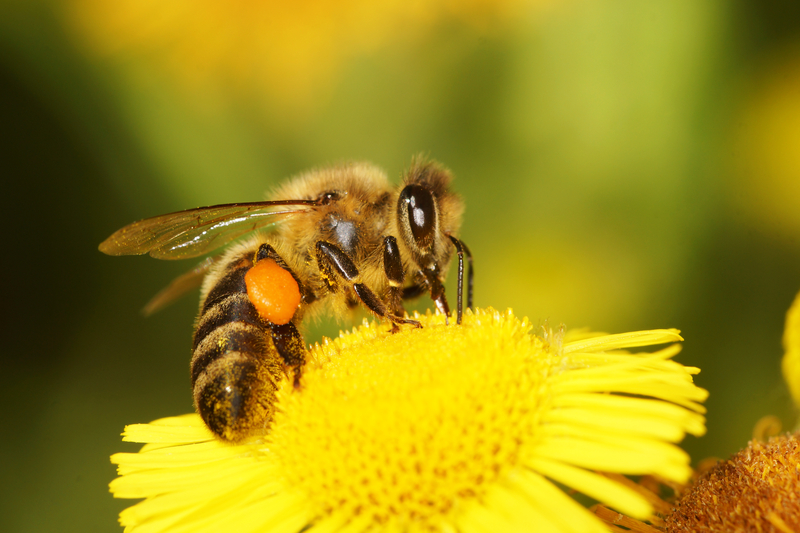Evergreen Climbers for Shade: Revitalizing Your Shadowed Areas
Posted on 25/06/2025
Evergreen Climbers for Shade: Revitalizing Your Shadowed Areas
Are your garden's shadowy corners looking dull and uninspired? A lush, vibrant landscape is possible even in the shadiest spots, thanks to evergreen climbers for shade. These versatile, attractive plants offer year-round structure, texture, and color, turning previously overlooked areas into stunning focal points. In this comprehensive guide, we'll explore the top shade-loving evergreen climbers, expert planting advice, creative design ideas, and tips for ongoing care. Whether you're transforming north-facing walls, fences, or pergolas, you'll find inspiration here to revitalize your shadowed areas.

Why Choose Evergreen Climbers for Shaded Spaces?
When it comes to gardening in shade, finding plants that thrive and maintain year-round interest can be challenging. Unlike deciduous climbers, which lose their leaves in winter, evergreen climbing plants for shade keep their foliage through all seasons, ensuring continuous screening, privacy, and visual appeal.
- Year-round beauty: No more barren fences or walls in winter.
- Coverage and privacy: Evergreen climbers create living green screens that offer seclusion.
- Wildlife friendly: Many species provide shelter for birds and beneficial insects.
- Low maintenance: Shady areas are often less prone to weeds and require less watering.
- Versatile: Perfect for walls, pergolas, arches, or as ground cover in woodland borders.
By selecting the right shade-tolerant climbing evergreens, you can turn those hard-to-plant spaces into lush, lively extensions of your garden.
Top Evergreen Climbers for Shade: Your Best Choices
Not all climbing evergreens for shade are created equal. Some will flower, others feature interesting foliage or berries. Here are some of the most reliable and beautiful candidates to consider for your garden:
1. Ivy (Hedera species)
- Hardiness: Hardy in zones 4-9, depending on variety.
- Light needs: Excellent for deep to partial shade.
- Features: Attractive variegated or green leaves, great for walls, fences, or as ground cover.
- Care tip: Regular pruning keeps it tidy and prevents invasiveness.
Perhaps the classic evergreen shade climber, Hedera helix (English ivy) and its many cultivars tolerate even the shadiest spots. It's perfect for covering unsightly structures and is relatively maintenance-free, aside from the occasional trim.
2. Star Jasmine (Trachelospermum jasminoides)
- Hardiness: Zone 8 and above (may need shelter in colder regions).
- Light needs: Open shade to semi-shade.
- Features: Glossy, deep-green leaves, summer-scented white flowers.
- Care tip: Requires support; appreciates fertile, well-drained soil.
Star Jasmine is one of the most elegant evergreen climbers for shady areas. In summer, it rewards you with clusters of fragrant, starry white blooms. Its foliage remains glossy and attractive year-round, making it ideal for patios, wall trellises, or pergolas in partial shade.
3. Clematis armandii
- Hardiness: Zones 7-9.
- Light needs: Prefers partial shade; protect from cold winds and harsh sun.
- Features: Long, leathery leaves and fragrant white spring flowers.
- Care tip: Prune after flowering to encourage fresh growth.
With its striking foliage and abundance of scented spring flowers, Clematis armandii is a shade-tolerant evergreen climber you'll treasure. It quickly covers fences and screens, providing beauty and privacy in shady alcoves.
4. Evergreen Honeysuckle (Lonicera henryi)
- Hardiness: Zones 6-9.
- Light needs: Partial to full shade.
- Features: Dark green leaves, yellow-orange flowers, decorative berries.
- Care tip: Mulch root area to keep cool and moist.
Unlike some of its deciduous relatives, Lonicera henryi keeps its leaves all year and tolerates quite a bit of shade. Its tubular flowers attract pollinators, adding color and wildlife interest to shadowed pergolas and fences.
5. Wintercreeper (Euonymus fortunei)
- Hardiness: Zones 5-9.
- Light needs: Tolerant of full sun to shade.
- Features: Variegated and green-leaved forms, spread by stems that root as they grow.
- Care tip: Control spread with regular pruning.
Well-known for its adaptability, Euonymus fortunei is often overlooked as a climbing evergreen for shade. Given the opportunity, it'll scramble up walls or fences, providing low-maintenance coverage and vibrant foliage throughout the year.
6. Climbing Hydrangea (Hydrangea seemannii & Hydrangea petiolaris)
- Hardiness: Zones 7-9.
- Light needs: Thrives in partial to heavy shade.
- Features: Large, waxy foliage, creamy clusters of summer flowers.
- Care tip: Needs patience--will be slow for the first few years but very rewarding long-term.
Though technically semi-evergreen in colder areas, climbing hydrangeas are reliable evergreen climbers for shade in mild climates. Their hearty leaves and subtle summertime blooms stand out in dark, protected corners where little else will thrive.
Other Notable Evergreens for Shady Areas
- Algerian Ivy (Hedera canariensis)
- Japanese Climbing Hydrangea (Schizophragma hydrangeoides)
- Russian Vine (Fallopia baldschuanica) - semi-evergreen in some climates
- Some Camellia species - shrub-like but can be trained as wall climbers
Always check local guidelines before planting, as some climbing evergreens can be vigorous and may be invasive in certain regions.
How to Plant and Care for Evergreen Shade Climbers
Choosing the Right Spot
Shade is not all the same. For best success with shade-tolerant evergreen climbers, determine whether your spot is:
- Light shade: Dappled sunlight for part of the day (e.g., under a deciduous tree).
- Partial shade: Several hours of sun, but shaded at least 50% of the time.
- Deep shade: Little to no direct sunlight, north-facing or in dense woodland areas.
Choose your climber accordingly - for example, English ivy and climbing hydrangea work well even in deep shade, while star jasmine prefers partial shade.
Preparing the Soil
Healthy soil is crucial for strong growth. Here's how to create the perfect conditions for your evergreen climbing plants for shade:
- Loosen the planting area deeply; mix in leaf mold or compost for enriched, moisture-retentive soil.
- Ensure good drainage; raised beds or adding grit may help in heavy clay soils.
- Mulch well after planting to keep roots cool and moist.
Support and Training
Most shade-tolerant evergreen climbers will need support to get a good hold. Use sturdy trellises, wires, or obelisks. As your plant grows:
- Secure new shoots with soft ties.
- Guide stems in the desired direction to ensure even coverage.
- Trim and shape annually to maintain neatness and encourage branching.
Design Ideas: Making the Most of Evergreen Climbers in Shade
The beauty of evergreen climbers for shaded areas isn't just their leaves but the versatility they bring to garden design. Here are inspiring ways to use them:
1. Green Walls and Vertical Gardens
Transform blank, north-facing fences and walls into lush green tapestries. Mix varieties like English ivy and climbing hydrangea for different leaf shapes, colors, and textures. This method maximizes space and creates impressive privacy screens.
2. Shady Pergolas and Arbors
Wind star jasmine or evergreen honeysuckle up and over a shaded pergola. Let their fragrant blooms dangle above, providing both beauty and a cool, sheltered spot to relax.
3. Woodland Paths and Entrances
Frame garden gates or archways with evergreen climbing plants for shade to invite visitors through a living green portal. Pair these climbers with ferns, hostas, or hellebores below for layered interest.
4. Softening Edges and Masking Structures
Use climbing evergreens to disguise sheds, bins, air-conditioning units, or unsightly fences. With year-round foliage, these plants provide soft lines and consistent coverage.
Seasonal Care and Maintenance
Though many evergreen climbers for shady areas are low-maintenance, follow these practices to ensure vigorous, healthy growth:
- Water newly planted climbers regularly for the first season, especially in dry spells.
- Feed each spring with a slow-release, balanced fertilizer to encourage leafy growth.
- Mulch surface annually to reduce weeds and conserve moisture.
- Prune after flowering or in late winter, depending on species, to remove dead wood and control shape.
- Inspect for pests and disease, such as scale insects or powdery mildew. Treat promptly if needed.
Solving Common Challenges in Shade Gardening with Climbers
Shade gardeners sometimes face issues like poor growth, sparse foliage, or slow establishment. Here's how to overcome the most common hurdles with your evergreen climbers for shade:
- Poor growth: Improve soil quality with extra organic matter and maintain consistent moisture.
- Leaf drop: Temporary shedding is normal during adjustment or after cold snaps; ensure shelter from wind.
- Patchy coverage: Regularly train lateral stems and pinch tips to encourage bushiness.
- Slow start: Many climbers take a year or two to establish before rapid growth kicks in--patience is key!
Bonus: Combining Evergreen Climbers with Other Shade Plants
For maximum impact, combine your evergreen shade climbers with underplantings of:
- Ferns
- Hostas
- Heucheras
- Woodland bulbs (like bluebells or snowdrops)
- Epimediums and groundcover perennials
This layered approach creates a dense, low-maintenance tapestry of foliage and blooms--ideal for any shaded garden.

Frequently Asked Questions
What is the fastest-growing evergreen climber for shade?
English ivy is renowned for its rapid growth even in deep shade, but take care to keep it in check. Lonicera henryi and some Euonymus cultivars are also quick to establish.
Will evergreen climbers grow in full shade?
Yes, but growth may be slower and flowering reduced. Focus on foliage varieties like Hedera helix and climbing hydrangea for best results in full shade.
Can I grow evergreen climbers in containers in shade?
Absolutely! Choose large, deep containers with rich, moisture-retentive compost. Ivy and star jasmine are especially well-suited to container life with the right support.
Are evergreen climbers invasive?
Some, like English ivy, can become invasive if not managed--prune regularly and avoid planting near sensitive habitats. Always check local advice before planting.
Conclusion: Transforming Your Shadowed Corners with Evergreen Climbers
Don't let shady spaces limit the beauty and utility of your garden. With the right evergreen climbers for shade, you can bring lush, verdant life and year-round appeal to the darkest parts of your landscape. Whether you opt for the classic look of ivy, the starry blooms of jasmine, or the leathery foliage of Clematis armandii, your shadowy corners can become serene, revitalized havens rich in color, privacy, and wildlife.
Explore, experiment, and let evergreen climbing plants for shade become the secret to your garden's enduring charm--even long after the sun has moved on.

